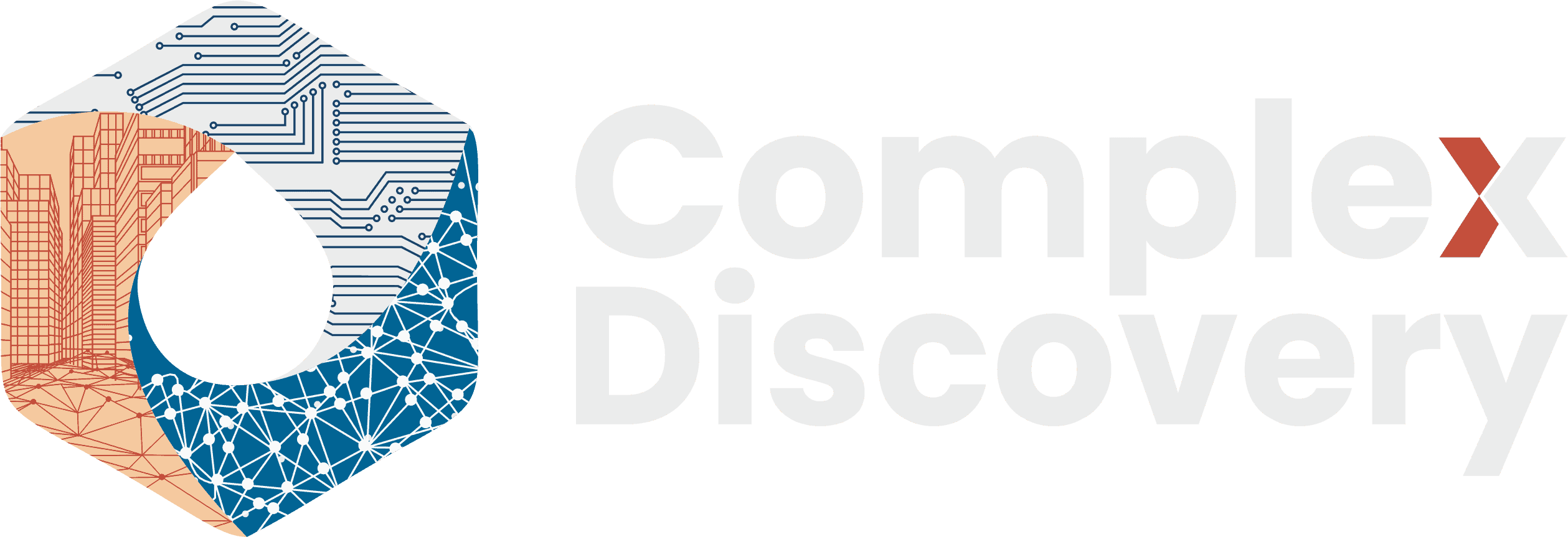Editor’s Note: AI oversight has become a board-level imperative. As artificial intelligence reshapes operations and risk profiles, corporate directors face rising scrutiny from regulators, shareholders, and stakeholders demanding real accountability. This in-depth article explores the widening gap between AI deployment and governance readiness—and why boards must move beyond symbolic oversight to embrace meaningful, independent governance structures. For cybersecurity, information governance, and eDiscovery professionals, the implications are profound: AI governance isn’t a future priority—it’s a present-tense necessity.
Content Assessment: Governing the Ungovernable: Corporate Boards Face AI Accountability Reckoning
Information - 92%
Insight - 92%
Relevance - 91%
Objectivity - 90%
Authority - 88%
91%
Excellent
A short percentage-based assessment of the qualitative benefit expressed as a percentage of positive reception of the recent article from ComplexDiscovery OÜ titled, "Governing the Ungovernable: Corporate Boards Face AI Accountability Reckoning."
Industry News – Artificial Intelligence Beat
Governing the Ungovernable: Corporate Boards Face AI Accountability Reckoning
ComplexDiscovery Staff
Boardrooms across corporate America are confronting an uncomfortable truth: artificial intelligence has outpaced their ability to govern it. As AI systems proliferate from finance departments to legal discovery platforms, directors face mounting pressure from investors, regulators, and shareholders to demonstrate they understand and control technologies that many struggle to explain.
The numbers tell a sobering story. Nearly half of Fortune 100 companies now specifically cite AI risk as part of board oversight—triple the 16% that disclosed such oversight in the previous year, according to research from the EY Center for Board Matters. Yet only 11% of boards have approved annual budgets for AI projects, and just 23% have assessed how AI disruption might fundamentally reshape their business models, according to WTW research.
This governance gap arrives at a precarious moment. According to the AI Incidents Database, the number of reported AI-related incidents rose to 233 in 2024—a record high and a 56.4% increase over 2023, Stanford University’s AI Index Report reveals. Meanwhile, an MIT study titled “The GenAI Divide: State of AI in Business 2025” reports that despite $30 to $40 billion in enterprise investment in AI, 95% of organizations are getting zero return. While this finding has generated significant discussion about measurement methodology, it highlights what compliance professionals at Speednet describe as an audit nightmare.
For cybersecurity, information governance, and eDiscovery professionals, the implications extend beyond theoretical risk. Organizations deploying AI for document review, threat detection, or compliance monitoring now face questions about data lineage, model explainability, and accountability that traditional governance frameworks were never designed to address. When an AI system misclassifies privileged documents or generates biased risk assessments, determining responsibility becomes a legal and operational quagmire.
The regulatory landscape compounds these challenges. California’s Transparency in Frontier Artificial Intelligence Act, effective January 2026, requires large developers to disclose risk management protocols and report safety incidents. The SEC increasingly treats AI governance as a material disclosure issue, with 48% of Fortune 100 companies now citing AI as part of board risk oversight in their filings, according to EY research. Boards that once delegated technology oversight to audit committees now find AI demanding full-board engagement across strategy, capital allocation, and risk management.
According to the National Association of Corporate Directors’ 2025 Public Company Board Practices and Oversight Survey, more than 62% of directors set aside agenda time to discuss AI, up from 28% in 2023. Yet this attention hasn’t translated into systematic governance, with most boards lacking formal AI governance frameworks or established metrics for management reporting.
The oversight challenge intensifies when examining who bears responsibility for AI decisions. Traditional governance relies on clear accountability chains, but AI systems introduce what experts call accountability gaps. When algorithms make consequential decisions about litigation holds, data retention, or security classifications, the question of human oversight becomes paramount. Research from Professor Helmuth Ludwig, a corporate director, and Professor Benjamin van Giffen identifies four critical governance categories: strategic oversight, capital allocation, risk management, and technological competence.
Building competence represents perhaps the steepest climb. The shortage of AI literacy at the board level creates asymmetric knowledge between directors and management, undermining effective oversight. The EY Center for Board Matters found that 44% of Fortune 100 companies now mention AI in their description of director qualifications—a substantial jump from 26% in 2024. Directors’ AI experience ranges from developing AI software to earning AI ethics certifications. The number of S&P 500 companies assigning AI oversight to board committees more than tripled in 2025, with audit committees most often assigned the oversight.
For information governance professionals, the operational implications demand immediate attention. AI systems require robust data governance as a foundation—data quality, security, and lineage directly determine AI performance and compliance posture, according to Atlan research. Without established practices for managing training data provenance, identifying algorithmic bias, or maintaining audit trails, organizations expose themselves to regulatory penalties and operational failures.
The eDiscovery sector offers a microcosm of these challenges. AI-powered review platforms promise efficiency gains, but introduce new risks around accuracy, privilege protection, and explainability. Industry guidance now emphasizes human-in-the-loop validation, where reviewers sample AI-classified documents to ensure machine decisions remain explainable and defensible. The NIST AI Risk Management Framework considers this validation prerequisite for trustworthy AI.
Cybersecurity leaders face parallel pressures. AI expands attack surfaces through new data flows and tools while simultaneously enabling more sophisticated threats. Companies cite AI-amplified cyber risk as their largest concern, with many describing AI as a force multiplier for attacks. This dual reality—AI as both shield and vulnerability—demands governance models that integrate cybersecurity and AI oversight rather than treating them as separate functions, according to Cyber Defense Magazine analysis.
Shareholder activism adds another layer of accountability. During the 2024-2025 proxy season, AI-related shareholder proposals received significant support, outpacing many traditional ESG proposals. Investors demanded transparency on AI ethics, workforce impacts, and algorithmic discrimination. Glass Lewis and ISS, the major proxy advisors, increasingly support disclosure proposals that help shareholders evaluate AI risks without constraining management discretion.
What separates effective governance from theater? Practical implementation distinguishes leaders from laggards. Organizations making progress share common practices: they maintain inventories of AI systems across departments; they conduct risk classifications distinguishing high-stakes applications from routine automation; they establish clear accountability for each deployed model; and they implement continuous monitoring rather than one-time assessments.
The governance frameworks themselves provide structure. The NIST AI Risk Management Framework organizes oversight into four functions —Govern, Map, Measure, and Manage —according to Bradley research. The ISO/IEC 42001 standard offers formal certification for organizations ready to validate their AI management systems. COSO’s Enterprise Risk Management framework extends traditional risk disciplines to address AI-specific challenges such as model drift and bias amplification, AuditBoard notes.
Documentation emerges as a critical discipline. AI development rarely meets the documentation standards regulators expect, creating gaps in audit trails, version controls, and justification records, according to SEC guidance analysis. Organizations that successfully navigate audits maintain comprehensive records of model design decisions, training data sources, validation results, and ongoing performance metrics. This documentation proves essential when regulators or litigants demand explanations for algorithmic decisions.
The intersection with privacy and compliance regulations creates additional complexity. GDPR’s requirements for data protection impact assessments extend to AI training data. HIPAA constrains healthcare AI deployments. Financial services firms must reconcile AI with model risk management requirements from the Federal Reserve and the OCC, according to Kaufman Rossin research. Each regulatory regime introduces specific controls that governance frameworks must accommodate.
Emerging technologies like agentic AI—systems that operate with increasing autonomy—present frontier governance challenges. As these agents make decisions and take actions with minimal human intervention, traditional human-in-the-loop safeguards become impractical. Governance models must evolve to define boundaries, monitor behaviors, and implement circuit breakers rather than approving individual decisions, according to analysis from The Institute of Internal Auditors.
For organizations building governance capabilities, Pacific AI experts recommend a phased approach. Start with a comprehensive audit mapping where AI operates, what data it accesses, and who owns each deployment. Develop policies addressing acceptable use, ethical boundaries, data handling, and risk tolerance. Introduce governance tools, including explainability software, content filters, and monitoring platforms. Establish cross-functional committees with clear authority to evaluate high-risk applications. Align governance with regulatory requirements relevant to your sector. Pilot these structures in limited, high-impact workflows before scaling enterprise-wide.
The cost of governance failure extends beyond regulatory fines. Biased algorithms damage reputations and invite litigation. Security breaches through AI systems erode customer trust. Failed projects waste capital and diminish competitive position. Perhaps most concerning, poor governance undermines the potential benefits of AI by creating organizational paralysis where innovation stalls amid uncertainty.
Successful governance doesn’t prevent all AI failures—the technology’s rapid evolution guarantees unexpected challenges. Rather, good governance ensures transparency when problems occur, resilience to adapt quickly, and accountability that maintains stakeholder trust even during setbacks. It transforms AI from an uncontrolled risk into a managed capability that boards can confidently support.
As 2025 progresses into 2026, the governance imperative will only intensify. More jurisdictions will implement AI regulations. Investors will demand greater transparency. Cyber threats will grow more sophisticated. The window for organizations to establish proactive governance is narrowing. Boards that treat AI oversight as a checkbox exercise rather than a fundamental governance responsibility risk obsolescence in an environment where algorithmic decisions increasingly determine competitive outcomes.
The question facing cybersecurity officers, information governance leaders, and legal technologists isn’t whether to govern AI—that decision has been made by regulators, investors, and market forces. The question is whether governance will be designed intentionally with clear accountability and robust controls, or whether it will emerge reactively from crises, penalties, and failures.
How will your organization ensure that the humans governing AI systems possess the technological literacy, ethical frameworks, and institutional authority necessary to make accountability more than aspirational?
Postscript: The Independence Paradox—When AI Governance Becomes an Echo Chamber
The rush to establish AI governance structures has created an unintended consequence that undermines the accountability these frameworks promise: the same executives responsible for implementing AI systems often control the committees that oversee them. This structural conflict transforms governance from independent oversight into a self-validating echo chamber where objectivity becomes performance rather than practice.
Analysis from the AI Competence Center reveals the depth of this problem: most AI ethics boards lack enforcement power, and conflicts of interest dilute objectivity when board members are hired by the very companies they’re supposed to regulate. The organization notes that many boards ended up symbolic—a public display of conscience without teeth —and that when decisions clashed with corporate profits, these boards were often ignored, sidelined, or quietly dissolved.
The governance architecture itself creates these conflicts. According to research published by the EY Center for Board Matters, the number of S&P 500 companies assigning AI oversight to board committees more than tripled in 2025, with audit committees being most often responsible. Yet audit committee members typically lack deep AI expertise, and their primary loyalty lies with management that appoints them—not with the broader stakeholder interests AI governance purports to protect.
Internal AI governance structures face even sharper independence challenges. Research from Shelf.io highlights that internal boards operate under direct company control, with members who are employees subject to dismissal if their oversight becomes inconvenient. External boards, in theory, address these independence problems through structural separation, but few companies embrace this model. Meta’s Oversight Board represents one of the few examples, structured as a purpose trust combined with a limited liability company that contracts individuals to provide oversight services.
The problem extends beyond formal authority to cognitive and cultural dynamics. When the people designing AI systems also sit on governance committees, groupthink becomes inevitable. Research warns that algorithmic systems create echo chambers that reinforce existing beliefs while excluding diverse perspectives. When applied to governance itself, this dynamic means committees validate the assumptions and biases of those implementing AI rather than challenging them.
The Institute of Internal Auditors emphasizes the need for robust checks and balances and segregation of duties, so that those who design and develop the AI programs are not the ones who test and deploy them. Yet AuditBoard research reveals that barriers to effective AI governance aren’t technological—they’re cultural and structural. Organizations suffer from distributed responsibility without distributed accountability, where everyone claims involvement in governance but no single entity bears enforceable authority.
The independence deficit creates measurable consequences. Most AI governance programs remain partially implemented at best, according to industry analysis. The primary obstacles aren’t technological but rather a lack of clear ownership, insufficient internal expertise, and limited resources—all symptoms of governance structures designed for appearance rather than function.
A high-profile example illustrates these dynamics. When Dr. Timnit Gebru, a leading AI ethics researcher at Google, raised concerns about bias in language models and the lack of diversity in decision-making in December 2020, the result wasn’t policy change—she departed the company amid controversy. Her exit sparked global discussion and exposed how vulnerable ethical voices can be, even when they’re globally respected. The incident highlighted the need for independent oversight—not just in-house advisors—and became a symbol of how tech firms often say one thing and do another.
Several approaches could restore independence to AI governance, though each requires organizations to cede control they’re reluctant to surrender. Independent AI auditors operating as third-party watchdogs could examine systems for fairness and safety without internal conflicts of interest. These auditors would report findings publicly, creating accountability through transparency rather than relying on internal enforcement mechanisms that can be overridden. Citizen assemblies—groups of randomly selected citizens who review and vote on AI policies—have proven effective for contentious social issues in France and Ireland. Applied to corporate AI governance, such assemblies would inject perspectives entirely independent of profit motives and corporate culture.
Regulatory mandates for independent oversight could replicate the Sarbanes-Oxley Act’s requirement for qualified financial experts on audit committees. Legal requirements that boards include members with AI expertise who maintain independence from management implementing AI systems would create structural separation that voluntary governance rarely achieves. Binding external ethics boards with contractual authority to block AI deployments that violate ethical standards would transform advisory boards into genuine accountability mechanisms. Companies like Anthropic have experimented with this model, though widespread adoption remains rare.
The echo chamber problem reveals a fundamental tension in corporate AI governance: asking organizations to police themselves on technologies central to their competitive strategies inevitably creates conflicts that undermine oversight. Research from Berkeley Haas emphasizes that ethics becomes performative when corporate incentives prioritize efficiency over responsible AI. Without independence mechanisms that separate those implementing AI from those governing it, corporate AI oversight risks becoming what critics describe as ethics-washing—creating the illusion of responsibility without delivering accountability.
For cybersecurity, information governance, and eDiscovery professionals navigating these dynamics, the practical implication is stark: evaluate AI governance not by its formal structures but by its independence from implementation. Governance committees dominated by technology executives deploying AI lack the objectivity to identify risks that those executives are incentivized to downplay. Boards without external expertise, enforcement authority, or protection from retaliation cannot provide the independent oversight that responsible AI demands.
Until governance structures incorporate genuine independence—through external auditors, regulatory mandates, or binding oversight mechanisms—corporate AI governance will remain more theater than substance, validating decisions already made rather than challenging assumptions that need questioning. The organizations that will navigate AI governance successfully won’t be those with the most committees or the longest ethics statements. There’ll be those willing to grant genuine authority to voices independent of implementation—voices empowered to say no, even when that answer conflicts with corporate objectives.
News Sources
- Cyber and AI oversight disclosures in 2025 (EY)
- Lessons in implementing board-level AI governance (WTW)
- How board-level AI governance is changing (WTW)
- Responsible AI | The 2025 AI Index Report (Stanford HAI)
- AI Data Privacy Risks Surge 56%: Critical Findings from Stanford’s 2025 AI Index Report (Kiteworks)
- Boards shift focus to tech and navigate cautious investors (Help Net Security)
- New report on AI governance: A ‘call to action’ for internal auditors (Audit Board)
- How to Form an AI Ethics Board for Responsible AI Development (Shelf)
- Fake Ethics? The Truth About AI Ethics Boards (AI Competence)
- The rise of AI incidents: A framework for AI Governance (Speednet)
Assisted by GAI and LLM Technologies
Additional Reading
- The Agentic State: A Global Framework for Secure and Accountable AI-Powered Government
- Cyberocracy and the Efficiency Paradox: Why Democratic Design is the Smartest AI Strategy for Government
- The European Union’s Strategic AI Shift: Fostering Sovereignty and Innovation
Source: ComplexDiscovery OÜ



























